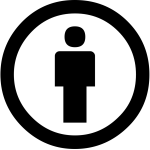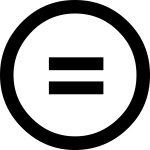Reusing Materials
Introduction
Many of the materials that we would like to include in our OERs are protected by copyright. Copyright is a bundle of rights associated with an original work. In Canada, these rights include the rights to reproduction, performance in public, and first publication. These rights pertain to the entirety of the work as well as any substantial part of it. The owner of copyright in a work is the only one who can permit others to undertake these activities. Therefore, it is often the case that we need permission in some form from the copyright holder to reproduce the materials for our OER, though there are some exceptions to this rule.
The growth of OERs is due to the widespread use of open licences. Open licences give users across the globe permission to reuse copyright-protected content if their use aligns with the terms and conditions set out in the licence. For example, a photographer may allow the public to use their photos for non-commercial purposes, as long as the photographer is given credit for the photo whenever it is used. There are a number of common open licences, including the Creative Commons suite, that will be discussed below.
Exceptions to copyright, or users rights, provide instances where a user does not require any form of permission from the copyright holder to use a work. Although the scope of these rights are limited, some could be leveraged for OER creation.
Creative Commons Licences
Creative Commons licences are frequently used in OERs. They are very permissive and have simple terms of use. Each licence is composed of a combination of four possible elements, shown in the table below.
| Element | Abbreviation | Symbol | Description |
|---|---|---|---|
| Attribution | BY |  |
you must give credit to the creator. |
| ShareAlike | SA |  |
adaptations must be under the same terms |
| NonCommercial | NC |  |
you may not reuse for primarily commercial purposes |
| NoDerivatives | ND |  |
you may not adapt the content |
Symbols by Creative Commons are used under the Creative Commons Trademark Policy.
There are six licences that the Creative Commons offers in their 4.0 suite:
Attribution 4.0 International Licence
This licence permits you to reproduce and share the source materials, as well as produce, reproduce, and share adaptations of the source material.
When using works with this licence, you must mention
- the creator(s) of the work in any reasonable manner specified by the licensor,
- the copyright notice,
- the licence and URL to the licence,
- the disclaimer of warranties, and
- the URL to the work,
All of these only apply if they are provided in the work. You must also note whether the work has been modified and retain a list of previous modifications if indicated in the source. All of this must be done in a reasonable manner.
See the Legal Code for more information.
Attribution-ShareAlike 4.0 International Licence
This licence permits you to reproduce and share the source materials, as well as produce, reproduce, and share adaptations of the source material.
When using works with this licence, you must mention
- the creator(s) of the work in any reasonable manner specified by the licensor,
- the copyright notice,
- the licence and URL to the licence,
- the disclaimer of warranties, and
- the URL to the work,
All of these only apply if they are provided in the work. You must also note whether the work has been modified and retain a list of previous modifications if indicated in the source. All of this must be done in a reasonable manner.
If you create an adaptation of this work, then you must share it under an Attribution-ShareAlike International 4.0 Licence, or another compatible licence.
See the Legal Code for more information.
Attribution-NonCommercial-ShareAlike 4.0 International Licence
This licence permits you to reproduce and share the source materials, as well as produce, reproduce, and share adaptations of the source material. Your undertakings of these activities under this licence must not be primarily intended for commercial advantage or monetary compensation.
When using works with this licence, you must mention
- the creator(s) of the work in any reasonable manner specified by the licensor,
- the copyright notice,
- the licence and URL to the licence,
- the disclaimer of warranties, and
- the URL to the work,
All of these only apply if they are provided in the work. You must also note whether the work has been modified and retain a list of previous modifications if indicated in the source. All of this must be done in a reasonable manner.
If you create an adaptation of this work, then you must share it under an Attribution-NonCommercial-ShareAlike International 4.0 Licence, or another compatible licence.
See the Legal Code for more information.
Attribution-NoDerivatives 4.0 International Licence
This licence permits you to reproduce and share the source materials, as well as produce and reproduce adaptations of the source material. It does not permit you to share adaptations of the source material.
When using works with this licence, you must mention
- the creator(s) of the work in any reasonable manner specified by the licensor,
- the copyright notice,
- the licence and URL to the licence,
- the disclaimer of warranties, and
- the URL to the work,
All of these only apply if they are provided in the work. You must also note whether the work has been modified and retain a list of previous modifications if indicated in the source. All of this must be done in a reasonable manner.
See the Legal Code for more information.
Attribution-NonCommercial-NoDerivatives 4.0 International Licence
This licence permits you to reproduce and share the source materials, as well as produce and reproduce adaptations of the source material. It does not permit you to share adaptations of the source material. Your undertakings of these activities under this licence must not be primarily intended for commercial advantage or monetary compensation.
When using works with this licence, you must mention
- the creator(s) of the work in any reasonable manner specified by the licensor,
- the copyright notice,
- the licence and URL to the licence,
- the disclaimer of warranties, and
- the URL to the work,
All of these only apply if they are provided in the work. You must also note whether the work has been modified and retain a list of previous modifications if indicated in the source. All of this must be done in a reasonable manner.
See the Legal Code for more information.
Attribution-NonCommercial 4.0 International Licence
This licence permits you to reproduce and share the source materials, as well as produce, reproduce, and share adaptations of the source material. Your undertakings of these activities under this licence must not be primarily intended for commercial advantage or monetary compensation.
When using works with this licence, you must mention
- the creator(s) of the work in any reasonable manner specified by the licensor,
- the copyright notice,
- the licence and URL to the licence,
- the disclaimer of warranties, and
- the URL to the work,
All of these only apply if they are provided in the work. You must also note whether the work has been modified and retain a list of previous modifications if indicated in the source. All of this must be done in a reasonable manner.
See the Legal Code for more information.
Other Open Licences
Pexels Licence
This licence permits you to reproduce, share, and adapt the source materials as long as the content is incorporated with other creative elements, such as text, images, video, etc.
The source material should not be redistributed on a ‘stand-alone basis’.
See the Terms and Conditions for more information.
Unsplash Licence
This licence permits you to reproduce, share, adapt, and perform the source material.
You may not compile photos from Unsplash to replicate or compete with Unsplash’s services.
See the Licence for more information.
Pixabay Licence
This licence permits you to reproduce, share, and adapt the source materials as long as the content is incorporated with other creative elements, such as text, images, video, etc.
The source material should not be redistributed on a ‘stand-alone basis’.
See the Terms and Conditions for more information.
YouTube Licence
This licence permits users to reproduce, distribute, prepare derivative works, display, and perform the source materials so long as doing so is enabled by a YouTube feature, such as embedding.
See the Terms of Service for more information.
Government of Canada Works
You may reproduce source materials owned by the Government of Canada for non-commercial purposes, unless otherwise specified in the material that you would like to reproduce.
Permission is required for any revision, adaptation, or translation, regardless of the purpose. Permission is required for reproduction for a commercial purpose.
When using a work under this licence, you must:
- ensure that the source material is accurately reproduced,
- indicate the title and author organization of the work, and
- indicate that it is a reproduction of an official Government of Canada work, and that the reproduction is not affiliated nor endorsed by the Government of Canada.
See the Crown Copyright Request page for more information.
Example:
“Appendix 1 – Structured Reference Checking Form” by the Government of Canada used under the Crown Copyright – NonCommercial Reproduction Licence (Canada). This reproduction is not endorsed by the Government of Canada
Open Government Licence – Canada
This licence permits the use of the source material for any lawful purpose.
You must acknowledge the source material by including an attribution statement as specified by the licensor and provide a link to this licence.
If the licensor does not provide an attribution statement, or if several you are using multiple materials under this licence and it is impractical to attribute them all, then you must use the following attribution statement:
Contains information licensed under the Open Government Licence – Canada.
See the Open Government Licence – Canada page for more information.
Government of Ontario Works
Ontario.ca has information and materials created by government ministries, agencies, third parties, external stakeholders and other partners. Unless otherwise indicated, the materials on this website are protected by Crown copyright, which is held by the King’s Printer for Ontario.
If credit is given and Crown copyright is acknowledged, the materials may be reproduced for non-commercial purposes if no changes are made to the original content.
See the Crown Copyright Request page for more information.
Open Government Licence – Ontario
This licence permits the use of the source material for any lawful purpose.
You must acknowledge the source material by including an attribution statement as specified by the licensor and provide a link to this licence.
If the licensor does not provide an attribution statement, or if several you are using multiple materials under this licence and it is impractical to attribute them all, then you must use the following attribution statement:
Contains information licensed under the Open Government Licence – Ontario.
See the Open Government Licence – Canada page for more information.
Statistics Canada Open Licence
This licence permits the reproduction, publication, distribution, and sale of the source materials as-is or as incorporated into new materials.
When using the source material under this licence, you must:
- reproduce the source materials accurately
- not imply that Statistics Canada endorses you or your use of the source materials
- not misrepresent the source materials
- use the source materials in a legal manner
- not merge or link the source materials with any other databases for the purpose of attempting to identify an individual person, business or organization;
- not present the source materials in such a manner that gives the appearance that you may have received, or had access to, information held by Statistics Canada about any identifiable individual person, business or organization; and
- not disassemble, decompile or in any way attempt to reverse engineer any software provided as part of the Information.
When using this licence to produce the source materials ‘as-is’, you must use the following attribution:
Source: Statistics Canada, name of product, reference date. Reproduced and distributed on an “as is” basis with the permission of Statistics Canada.
When using this licence in a value-added product, you must use the following attribution:
Adapted from Statistics Canada, name of product, reference date. This does not constitute an endorsement by Statistics Canada of this product.
See the Statistics Canada Open Licence page for more information.
User Rights
Copyright does not grant complete control over a work, it is limited by its term and applicability. An important example of this limit is user rights, which allows copyright-protected works to be used in some circumstances without the permission of the copyright owner. Although these exceptions are limited in their scope, the nature of an OER admits several possible applications of users rights, including fair dealing, which gives authors further opportunities to enrich their texts with materials that may not be available under an open licence.
Works in the Public Domain
Works in the Public Domain are no longer protected by copyright and may therefore be reproduced by any user for any legal purpose.
In Canada, the term of copyright is 70 years after the death of the work’s authors for most creative works. Prior to 2023, the term was 50 years after the death of the work’s author.
See the Copyright Act, ss. 6-12 as well as the Canadian Copyright Term and Public Domain Flowchart.
Insubstantial Reproduction
Copyright protection is limited to the substantial parts of a work. The insubstantial parts may therefore be used freely. Substantiality is not defined by statute, but has been considered by Canadian courts. Factors that may be relevant in determining substantiality were considered by the Federal Court in Warner v. Fournier:
Whether a substantial part of a work has been reproduced is a question of fact and involves a qualitative as well as quantitative analysis. The relevant factors to be considered include:
- the quality and quantity of the material taken;
- the extent to which the respondent’s use adversely affects the applicant’s activities and diminishes the value of the applicant’s copyright;
- whether the material taken is the proper subject-matter of a copyright;
- whether the respondent intentionally appropriated the applicant’s work to save time and effort; and
- whether the material taken is used in the same or a similar fashion as the applicant’s: U & R Tax Services Ltd v H & R Block Canada Inc, [1995] FCJ No 962, at para 35.
Fair Dealing for Purposes of Education
Fair dealing for the purpose of education does not infringe copyright in Canada.
The reproduction or adaptation of materials protected by copyright in an OER will be for an educational purpose if they are used in a manner that promotes learning. There are three common types of materials that could be included in an OER for an educational purpose: illustrative, supplementary, and educational materials.
The fairness of the use of each type of material will depend on a standard fair dealing analysis. The relevant questions for such an analysis are listed below under each material type.
For more information on fair dealing, see the Copyright Act, s. 29 and CCH Canadian Ltd. v. Law Society of Upper Canada.
Illustrative Materials
An illustrative example uses a work to provide tangible examples of what is being taught. For instance, including an audio clip of a recorded song to demonstrate a particular chord progression in a music theory text.
Here are some questions to ask before using material in this way:
- Are the examples purposive and impactful from a pedagogical standpoint?
- How much of the work is needed to effectively illustrate the example?
- If using a photo or similar format, it may be necessary to show the whole photo. But, if using a film, then a short clip is likely sufficient for this purpose.
- If drawing multiple examples from a single work, could another work be used instead?
- Is there open content that could be used to achieve the same purpose?
- Does the inclusion of this example negatively impact the market for the original work?
- Consider how the work is being exploited by the copyright owner and if your use would create a market substitute for the work.
Supplementary Materials
Materials that provide an opportunity for learners to apply and reinforce their understanding of the subject. For instance, including a newspaper article that discusses a social issue for students to read and critique in an OER on sociology. Typically, these should be materials that are non-educational in nature.
Here are some questions to ask before using material in this way:
- Is the use purposive and impactful from a pedagogical standpoint?
- This may necessitate the inclusion of supporting materials such as guiding questions or commentary to direct learners in their use of that material.
- How much of the material is needed for the intended application?
- If a student could achieve the learning goals effectively with a shorter excerpt then that should be preferred over a longer one.
- If providing multiple resources from the same work, could another work be used instead?
- Is there open content that could achieve the same purpose?
- Does the inclusion of this material negatively impact the market for the original work?
- Consider how the work is being exploited by the copyright owner and if your use would create a market substitute for the work. If a work has been edited for use in another educational resource, this may weigh unfavourably.
Educational Materials
Materials that serve as the primary source of information on a subject. For instance, incorporating and or updating questions and exercises from a commercial textbook. Since these materials have been created for the same purpose as the OER, extra care needs to be exercised for these uses.
Here are some questions to consider before using materials in this way:
- Are the works purposive and impactful from a pedagogical standpoint?
- How much of the material is needed for your purpose?
- If providing multiple resources from the same work, could another work be used instead?
- Is there open content that could achieve the same purpose?
- Is there still a market for this material? Is the market for this material the same as this OER?
- If so, using the source as a primary material may create a market substitute that would negatively affect the fairness of the dealing.
Fair Dealing for Purposes of Criticism or Review
Fair dealing for the purpose of criticism or review does not infringe copyright in Canada if the source and creator of the work is mentioned.
The reproduction of works protected by copyright will be for the purpose of criticism or review whether the author themself engages in the criticism/review, or if they merely provide the object to enable the learner to engage in their own criticism/review. There are many ways in which criticism or review may be expressed, and there is no limitation on the type of media that may be used.
Here are some questions to consider before using materials in this way:
- Are the works being incorporated solely for criticism?
- Including materials with the intention of giving a learner access to for alternative reasons may not meet this criteria. If the author does not engage in the criticism, then there should be guidance provided to guide the learner to do so.
- Is the amount of the work being used necessary for your criticism/review?
- It may sometimes be fair to use a whole work, such as in the criticism of a photo.
- If providing multiple criticisms/reviews of parts from the same work, could another work be used instead?
- Does the inclusion of this material negatively impact the market for the original work?
- This weighs less heavily for dealings that have used an appropriate amount of the work, as there will be no other way to engage in the criticism.
For more information on fair dealing, see the Copyright Act, s. 29.1 and CCH Canadian Ltd. v. Law Society of Upper Canada.
Generative Artificial Intelligence
In recent years, we have seen a rapid increase in use of generative artificial intelligence (GenAI) like ChatGPT, Copilot, or Midjourney. These programs are ‘trained’ using statistical programs that analyze human-created data such as text, source code, and images. In doing so, the program optimizes itself to predict/generate text and images based on a prompt.
In the creation of an OER, an author may find it useful from time-to-time to use GenAI. The reasons for doing so may vary, but there are a few things to keep mind:
- Some outputs are infringing: GenAI can output works that are substantially similar to one or more copyright-protected works. Using such outputs could amount to infringement if not allowed by fair dealing or another user right.
- Original outputs are in the public domain: Copyright is only assigned to original works made by human authors. The original outputs of AI are therefore unprotected by copyright. When attributing GenAI, this should be noted.
- Derivative works using GenAI may qualify for copyright protection: creating a derivative work will give its author copyright in the parts of the derivative that are original to them, such as the arrangement of materials or any modifications made. This will apply to derivatives of GenAI outputs. For example, the US Copyright Office granted copyright in the arrangement of text and images in the comic Zarya of the Dawn, but not the images themselves since they were generated by Midjourney.
Attributions
“Fair Dealing for Purposes of Education” and “Fair Dealing for Purposes of Criticism and Review” adapted from Code of Best Practices in Fair Dealing for Open Educational Resources: A Guide for Authors, Adapters & Adopters of Openly Licensed Teaching and Learning Materials in Canada © 2023 CARL and written by Rowena Johnson, Heather Martin, Stephanie Savage, Joshua Dickison, Ann Ludbrook and Kayla Lar-Son under a Creative Commons Attribution 4.0 International Licence. Modifications: abbreviated the content.

